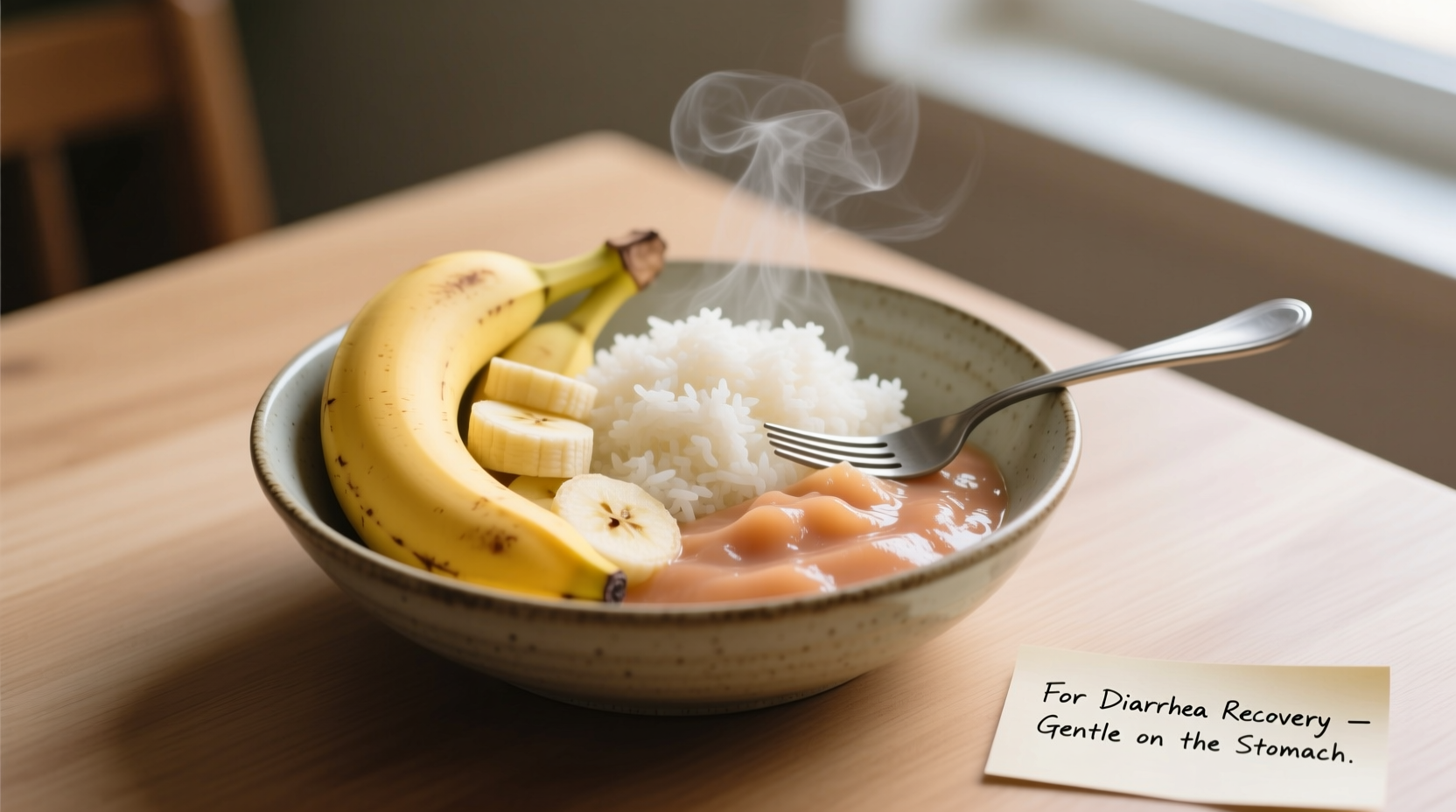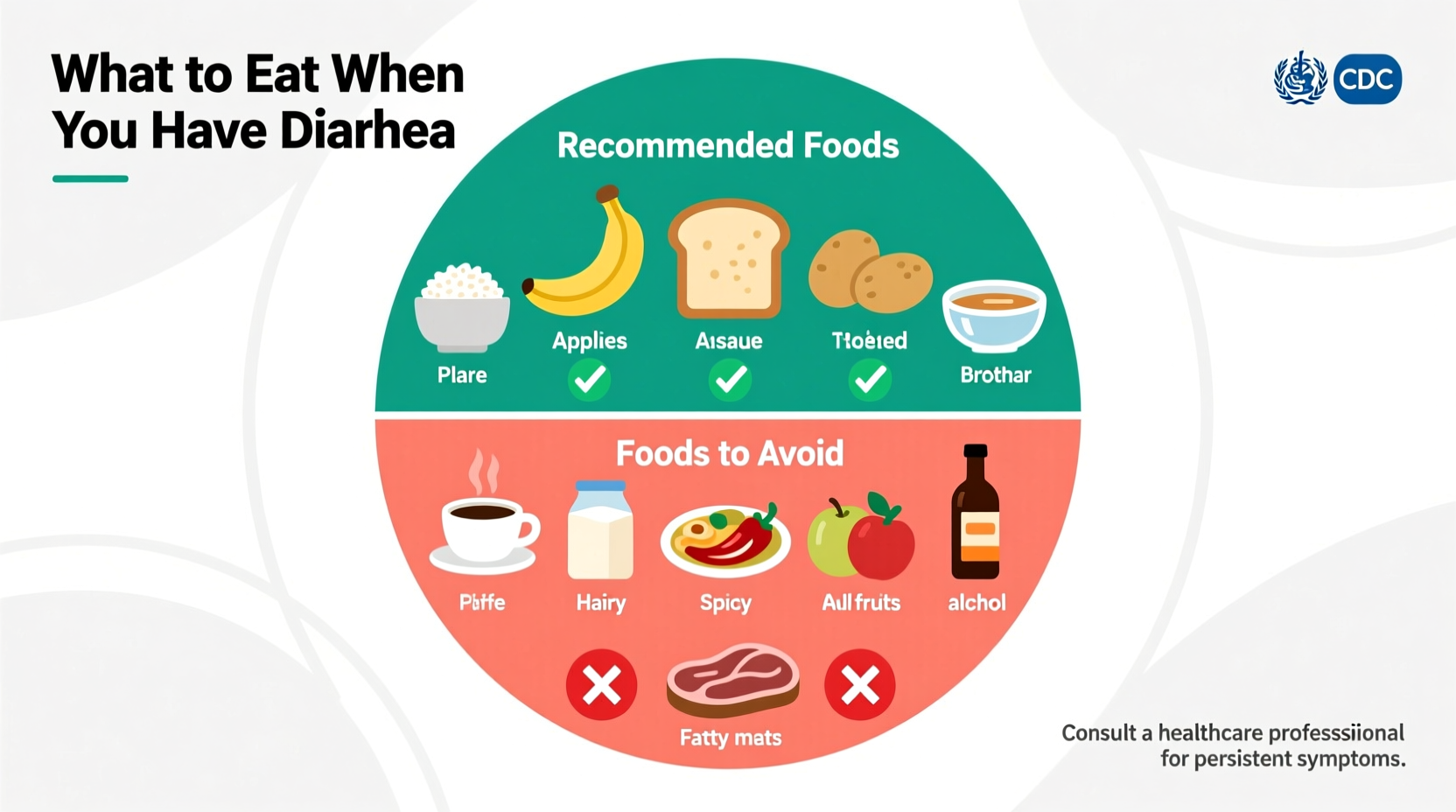
Understanding Diarrhea and Dietary Impact
Diarrhea occurs when your digestive system moves too quickly, preventing proper water absorption. During this time, certain foods can either soothe your digestive tract or worsen symptoms. The primary goals are to:
- Replace lost fluids and electrolytes
- Give your digestive system rest
- Gradually reintroduce nutrients
According to the Centers for Disease Control and Prevention, acute diarrhea typically lasts 1-2 days and resolves without medical treatment in most cases. However, proper dietary management significantly impacts recovery time and comfort level.
Immediate Dietary Protocol: First 24 Hours
During the initial phase of diarrhea, your digestive system needs maximum rest. Focus on hydration before introducing solid foods.
| Recommended Hydration Options | Why It Works | How to Use |
|---|---|---|
| Oral rehydration solutions (ORS) | Optimal sodium-glucose ratio enhances water absorption | 8-16 oz after each loose stool |
| Clear broths | Provides sodium without irritating digestive tract | Sip slowly throughout day |
| Diluted apple juice (1:1 with water) | Milder sugar content than sports drinks | Limited to 4-8 oz daily |
Avoid plain water alone during active diarrhea episodes, as it doesn't replace lost electrolytes. The Mayo Clinic emphasizes that proper hydration management prevents complications that might require medical intervention.
What to Eat as Symptoms Improve
As bowel movements become less frequent (typically after 12-24 hours), gradually introduce bland, binding foods. The modern approach has evolved beyond the traditional BRAT diet to include more nutritional variety while maintaining digestive safety.
Top Recommended Foods
- White rice - Easily digestible carbohydrate that helps firm stools
- Boiled potatoes (without skin) - Provides potassium without irritation
- Cooked carrots - Contains pectin which can help reduce stool frequency
- Plain oatmeal - Soluble fiber absorbs excess fluid in the intestines
- Lean proteins like boiled chicken - Replenishes protein without fat irritation
The UK National Health Service notes that while the BRAT diet remains helpful initially, prolonged use (beyond 24-48 hours) can lead to nutritional deficiencies. A more balanced approach incorporating additional nutrient-dense options supports faster recovery.
What to Avoid Until Fully Recovered
Certain foods can worsen diarrhea or delay recovery. Avoid these until your digestive system has normalized for at least 48 hours:
| Foods to Avoid | Why They Worsen Symptoms | Typical Recovery Timeline Before Reintroduction |
|---|---|---|
| Dairy products | Temporary lactose intolerance often develops during diarrhea | 3-7 days after symptoms resolve |
| High-fiber foods (whole grains, raw vegetables) | Increases bowel movement frequency | 2-3 days after symptoms resolve |
| Fatty or fried foods | Speeds intestinal transit time | 2-3 days after symptoms resolve |
| Caffeine and alcohol | Stimulates bowel activity and dehydrates | Until fully recovered |
Recovery Timeline and Dietary Progression
Most cases of acute diarrhea resolve within 1-2 days with proper dietary management. Follow this progression to avoid setbacks:
| Time Since Symptoms Began | Dietary Focus | Warning Signs to Watch For |
|---|---|---|
| 0-12 hours | Hydration only (ORS, clear broths) | Signs of dehydration: dark urine, dizziness, dry mouth |
| 12-24 hours | BRAT foods + electrolyte solutions | More than 6 watery stools in 24 hours |
| 24-48 hours | Expanded bland diet (lean proteins, cooked vegetables) | Blood in stool or high fever |
| 48-72 hours | Gradual return to normal diet | Symptoms worsening after initial improvement |
The American Gastroenterological Association emphasizes that attempting to return to a normal diet too quickly is the most common mistake people make when recovering from diarrhea. Each stage serves a specific purpose in allowing your digestive system to heal gradually.
When to Seek Medical Attention
While most diarrhea cases resolve with home care, certain symptoms require professional evaluation:
- Diarrhea lasting more than 48 hours in adults (24 hours in children)
- Signs of severe dehydration (extreme thirst, minimal urination, dizziness)
- Blood or black stools
- Fever above 102°F (39°C)
- Inability to keep fluids down
Vulnerable populations including infants, elderly individuals, and those with compromised immune systems should seek medical advice sooner. The National Institute of Diabetes and Digestive and Kidney Diseases notes that proper medical evaluation is crucial when diarrhea persists beyond the typical timeframe, as it may indicate underlying conditions requiring specific treatment.
Preventing Future Episodes
While occasional diarrhea is normal, frequent episodes may indicate dietary sensitivities or other issues. Consider these preventive measures:
- Maintain good hand hygiene, especially before eating
- Be cautious with food safety when traveling
- Identify potential food intolerances through elimination diet
- Consider probiotic supplementation after antibiotic use
- Stay hydrated consistently, not just during illness
Research published in the American Journal of Clinical Nutrition shows that regular consumption of probiotic-rich foods like yogurt (when tolerated) can reduce the frequency of acute diarrhea episodes by supporting healthy gut flora.











 浙公网安备
33010002000092号
浙公网安备
33010002000092号 浙B2-20120091-4
浙B2-20120091-4